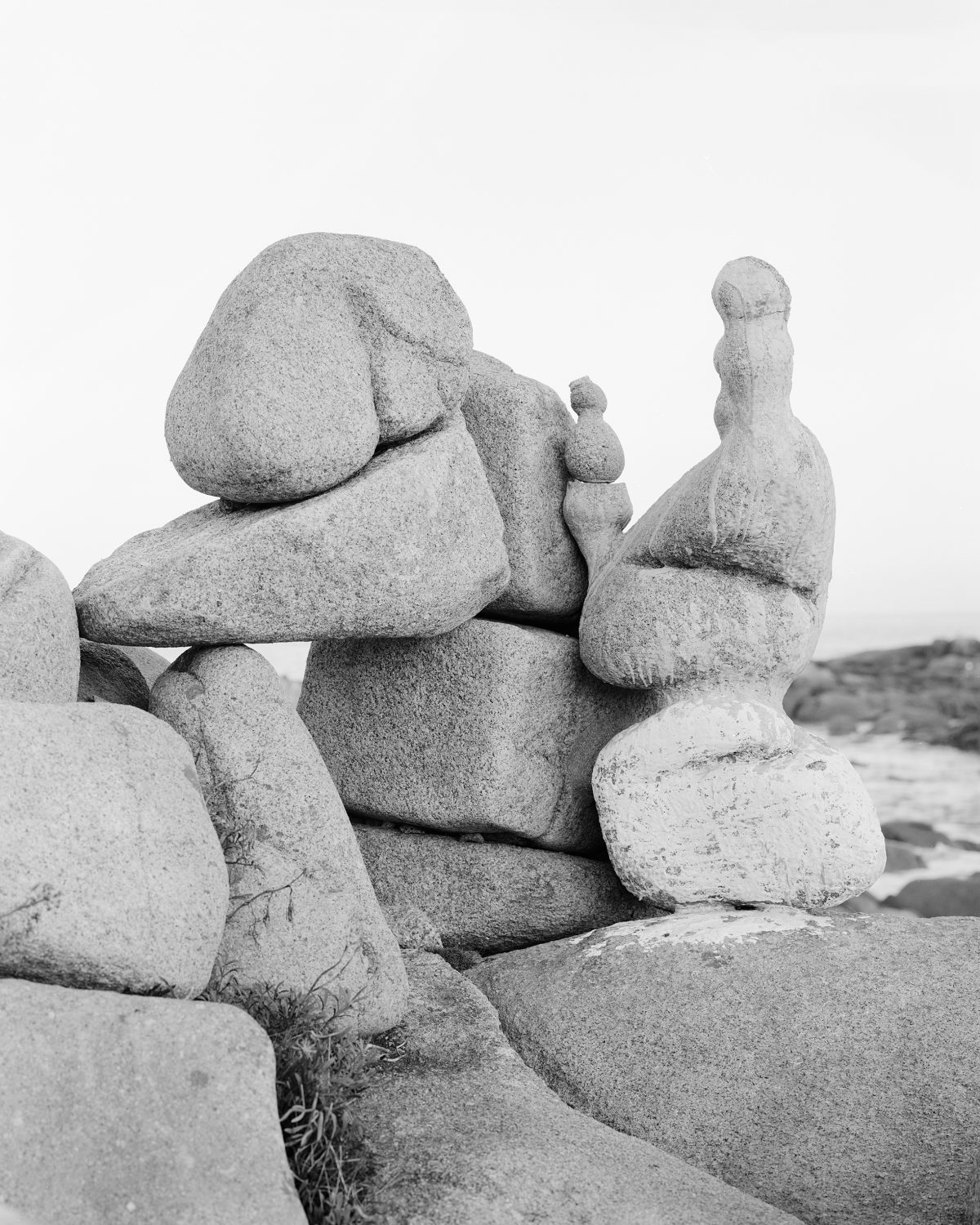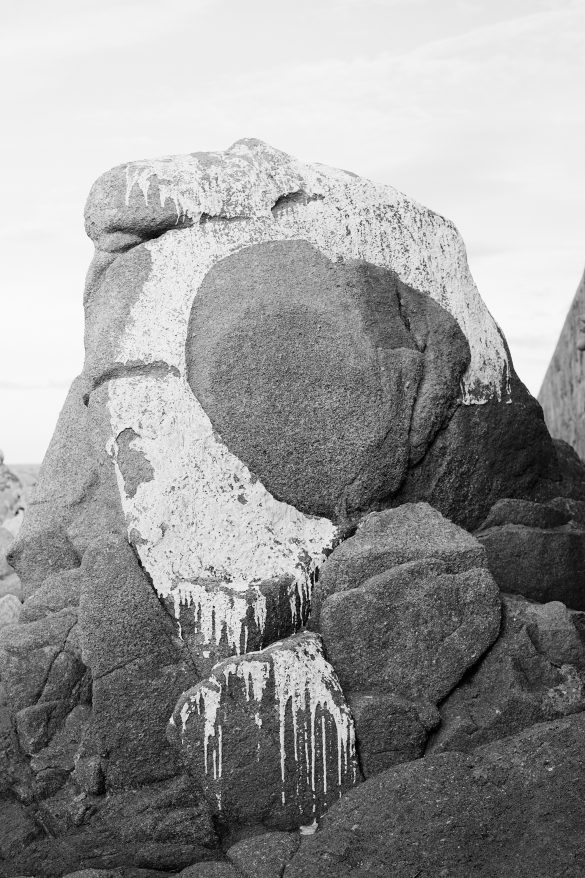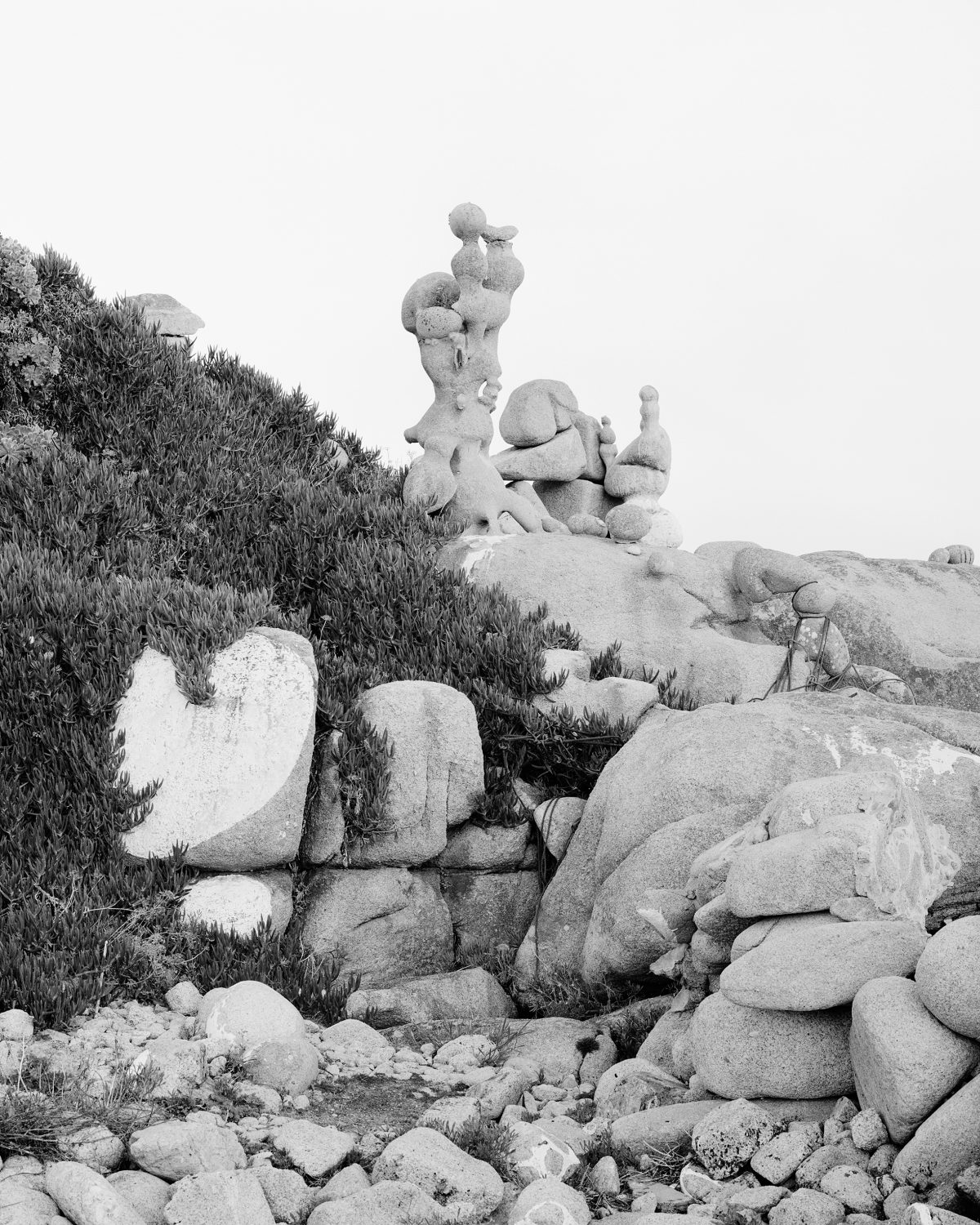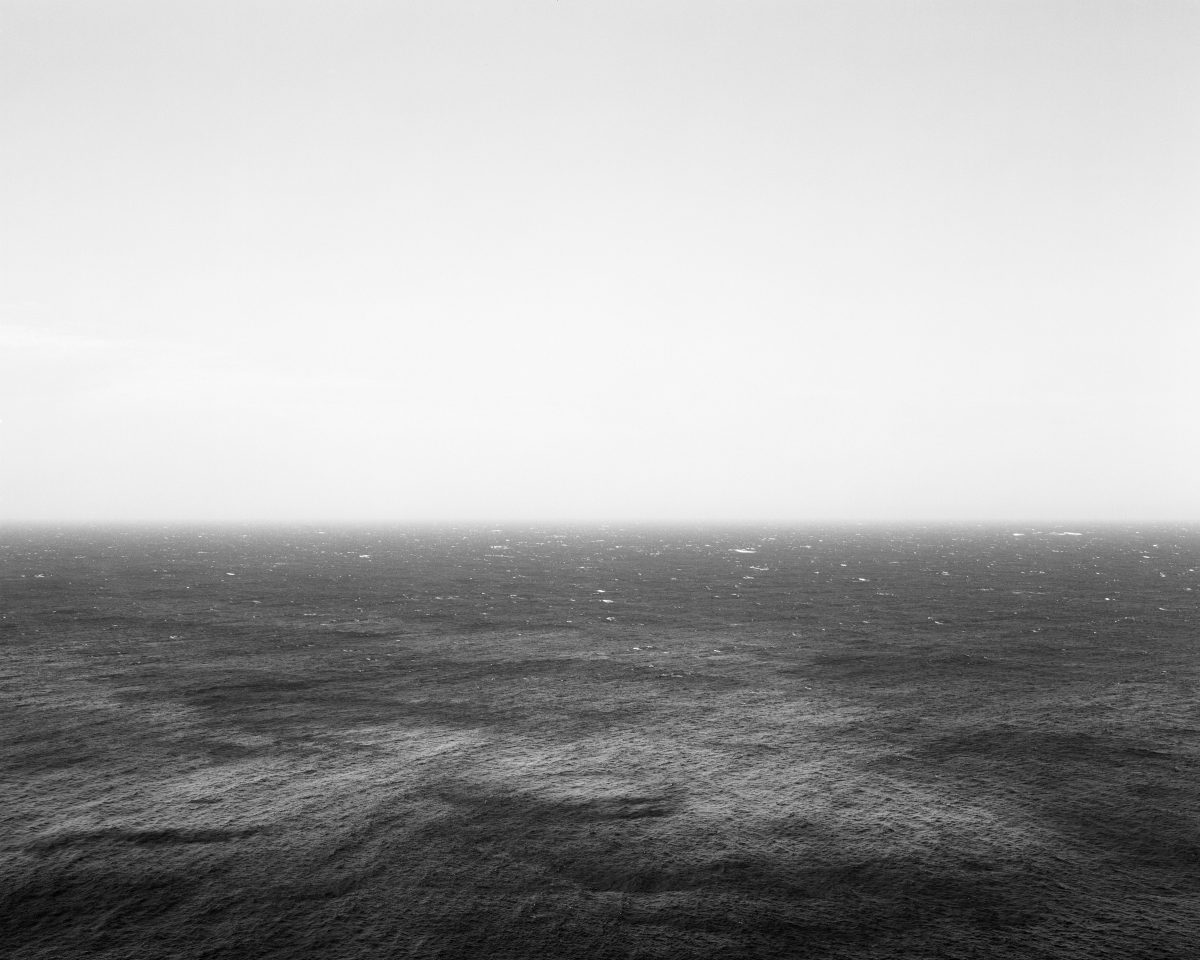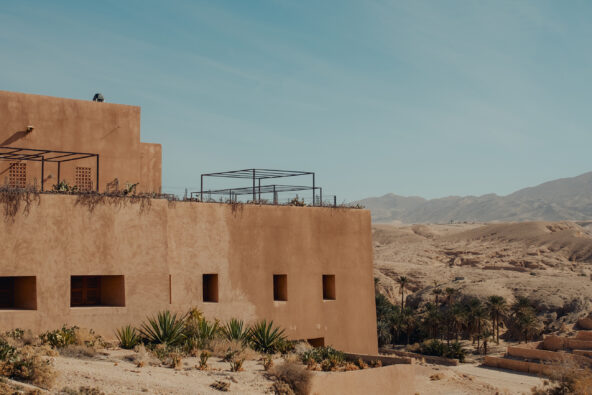‘The German’ and his legacy on the Coast of Death
In the Galicia region of Spain lays a stretch of Atlantic coast known as the Coast of Death, Costa Da Morte. This remote and unforgiving coastline is scattered with small fishing villages including Camelle, former home of Manfred Gnadinger. On 28th December 2002 he was found dead in his self-built hut on the edge of the ocean.
In 1962 Manfred arrived in Camelle from his family home in south Germany and began settling into the small community. He soon abandoned his rented house and built a small five meter square concrete hut on the edge of the ocean where he began a life surrounded by the sea and nature.
Over the course of 40 years he created sculpture and artwork using wave-smoothed stones, driftwood, animal remains and anything else washed up by the sea. Circles became a theme within his work, and slowly started appearing within the broader terrain of his home like symbols of his presence and vision.
Its said that he died of melancholy and sadness after his harmony with nature and the environment was destroyed by one of the largest environmental disasters in European history, the sinking of the Prestige oil tanker.
On 19th November 2002, the Prestige oil tanker split in half and sank 250km offshore in the Atlantic Ocean polluting the sea with 20million gallons of oil. Man’s life was engulfed with black oil, and he saw everything he’d created destroyed. His life’s work, his home and garden, and the entire natural environment around him covered in oil. Man locked himself inside his home with a note on the door asking nobody to enter. A month passed and local villagers grew increasingly worried about him. They found him dead laying on his bed.What remains is a fading glimpse of Manfred’s existence. His home and garden stand dormant, weathered from the close proximity to the sea. His sculptures are only ghosts of the original forms, some have collapsed or fallen, others have been vandalised.
All images Bobby Mills.
